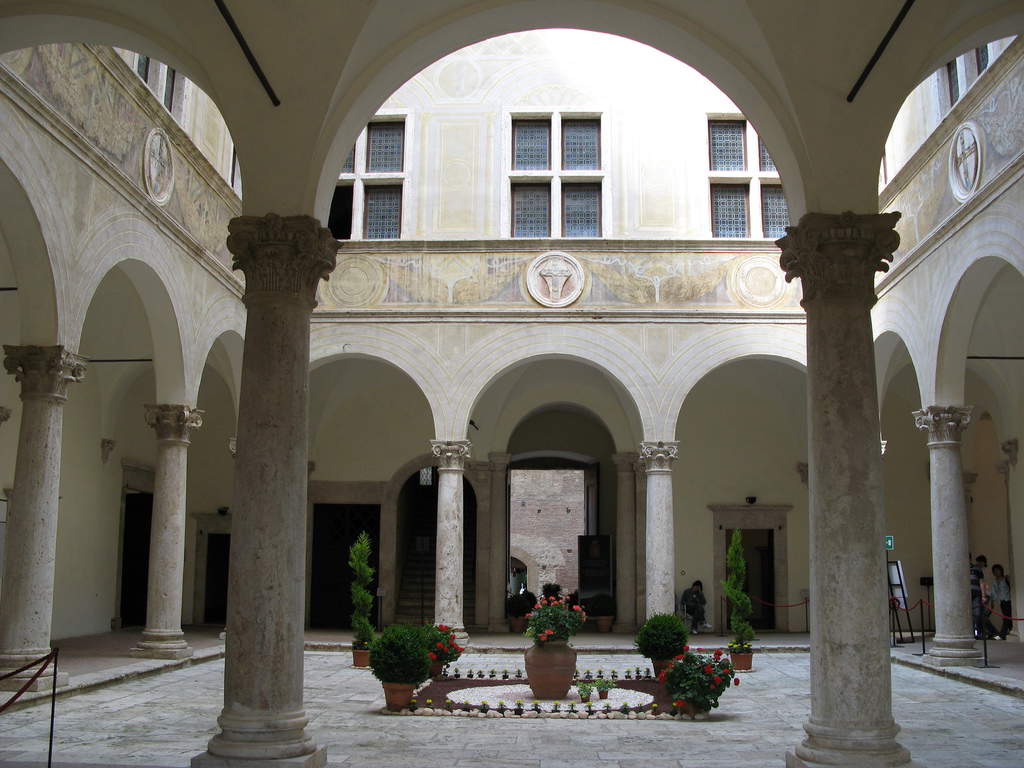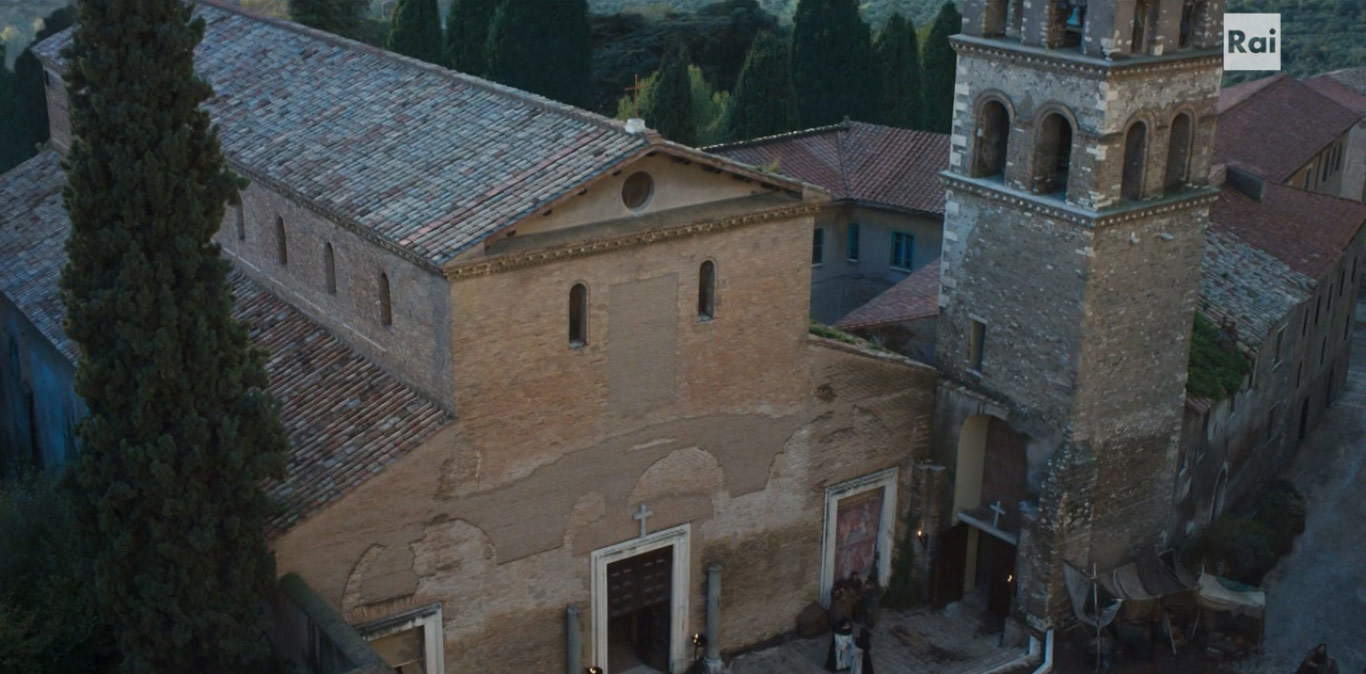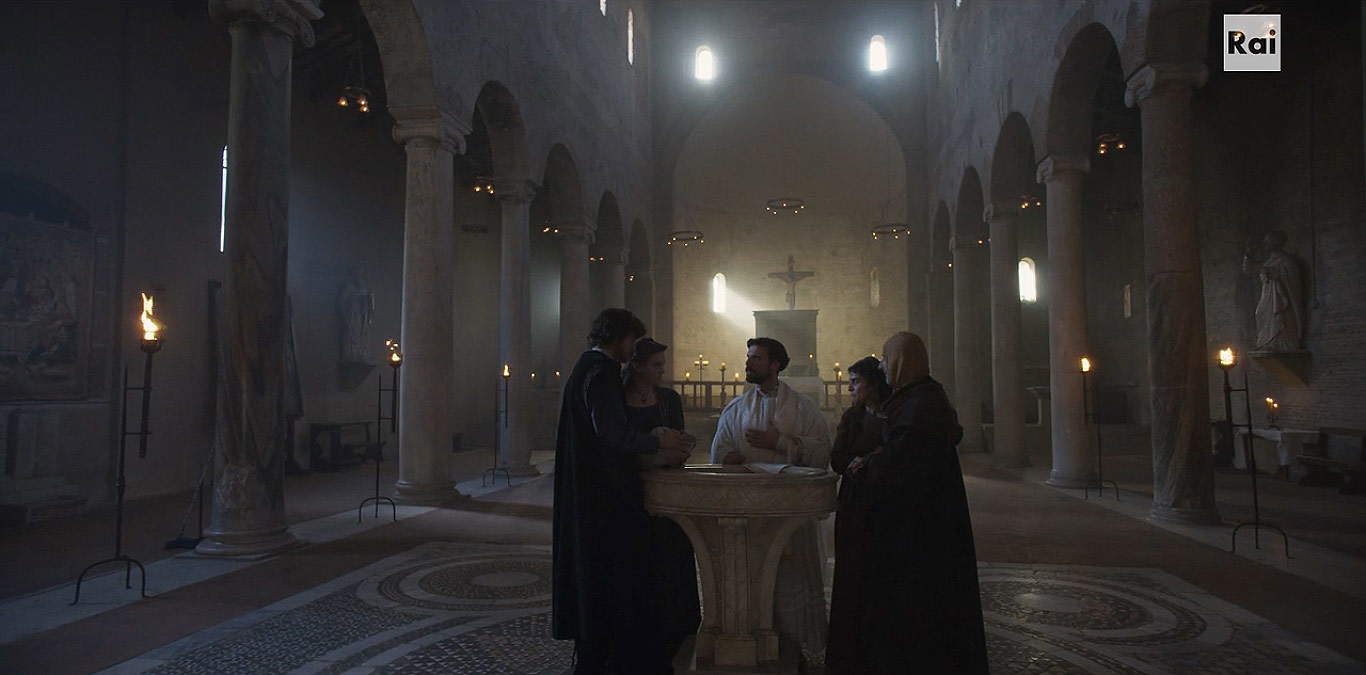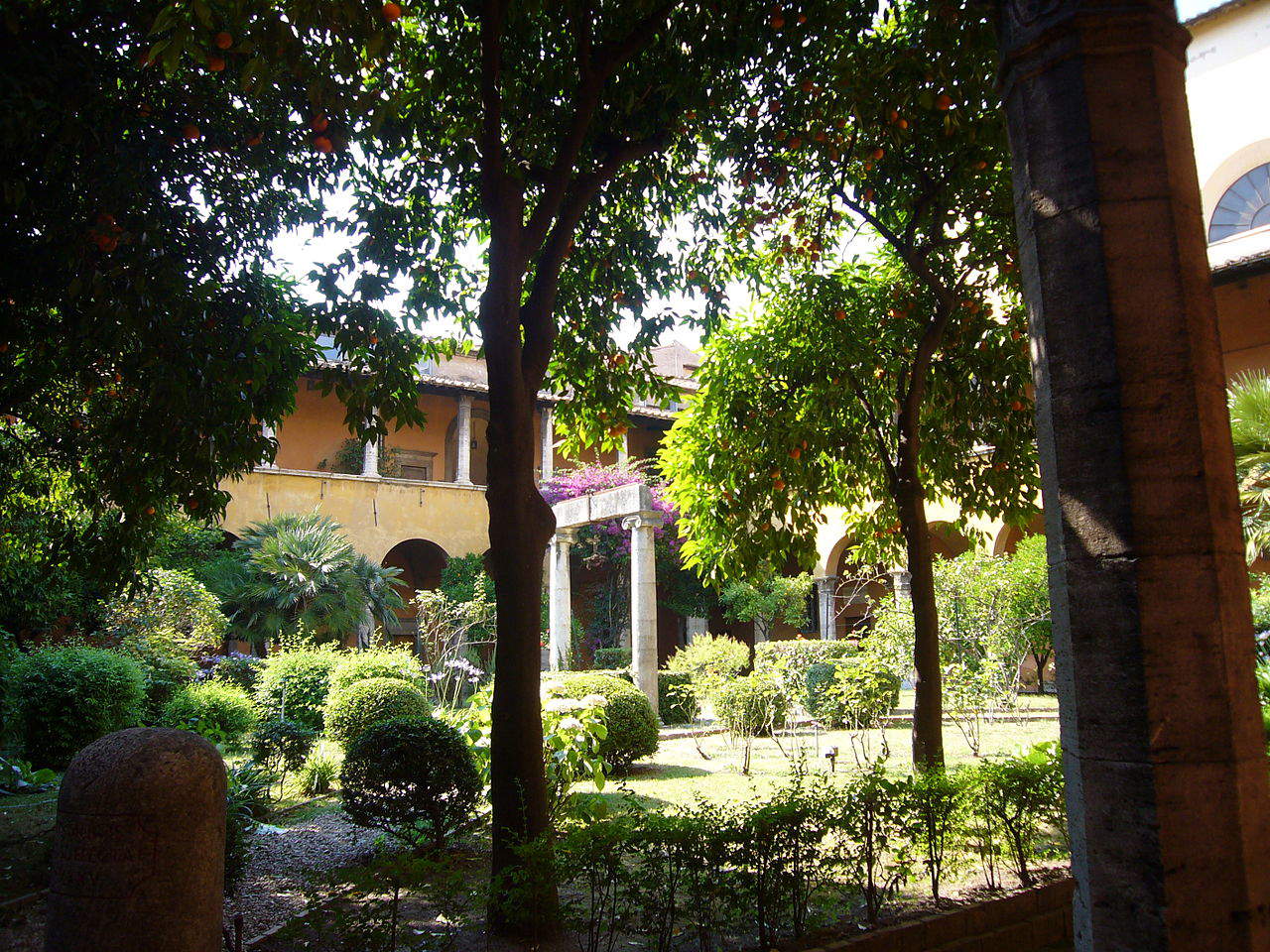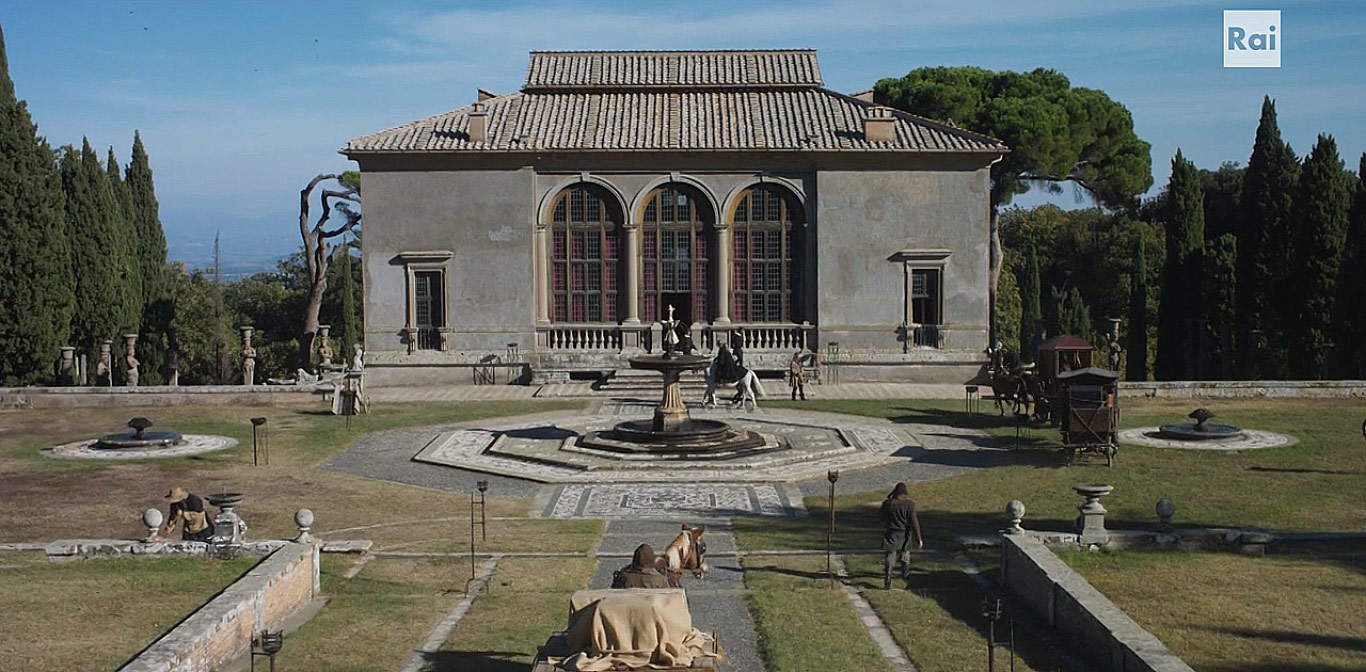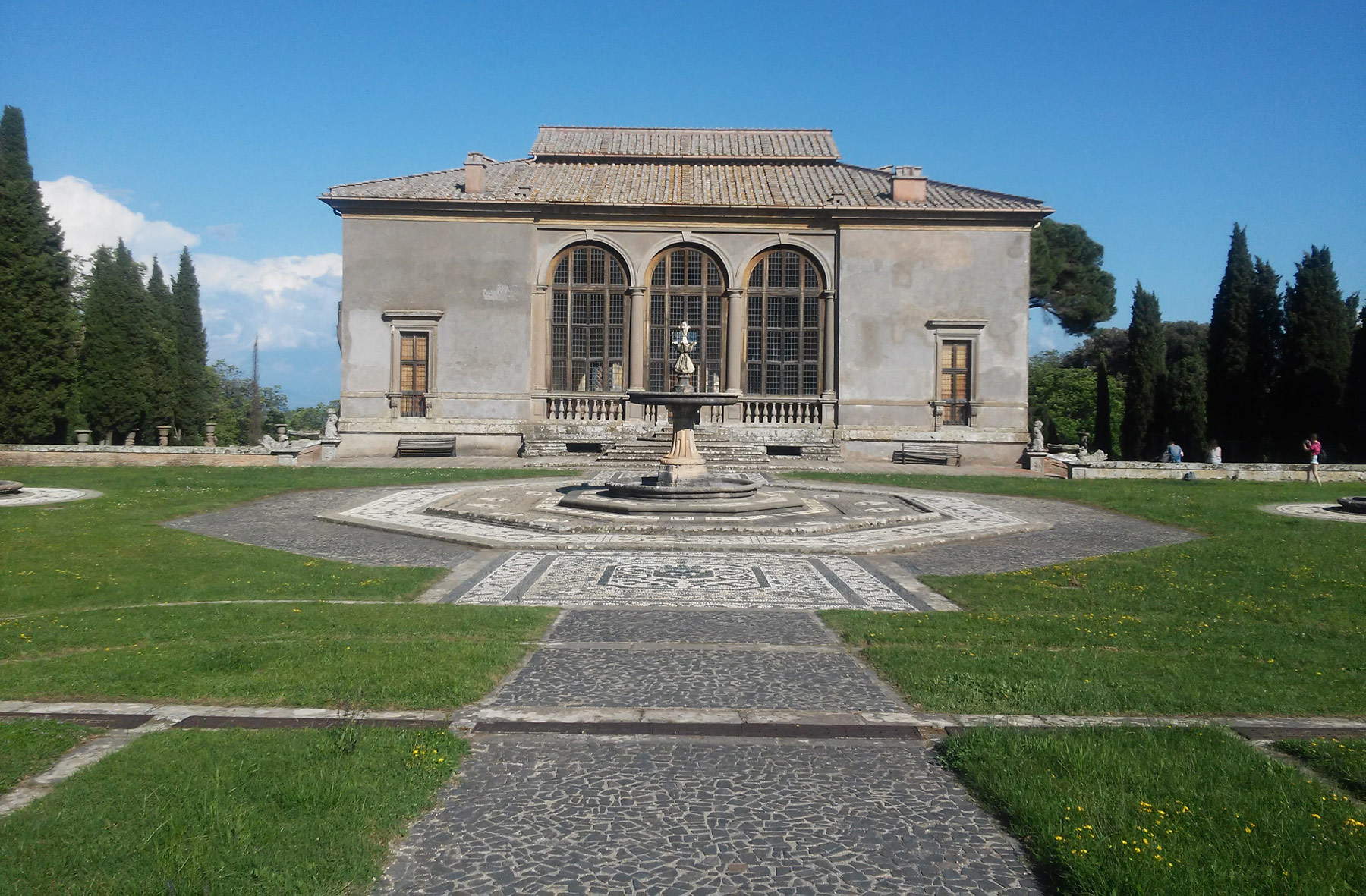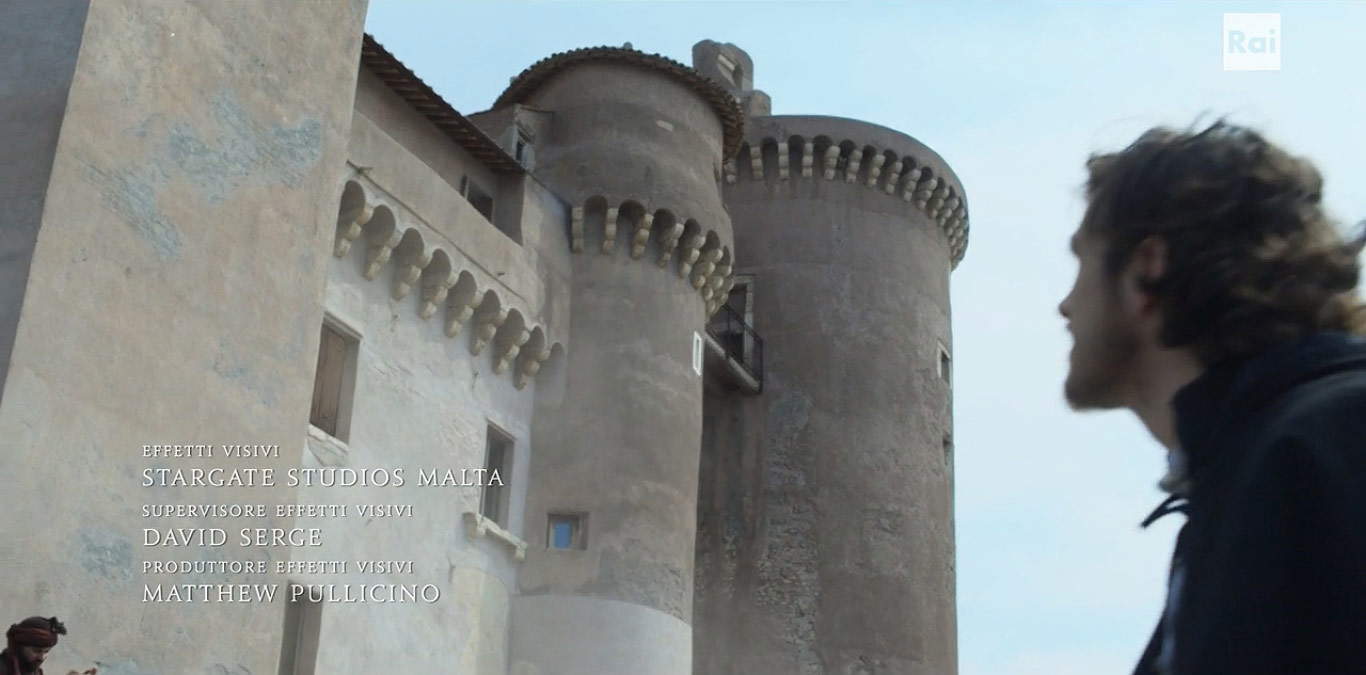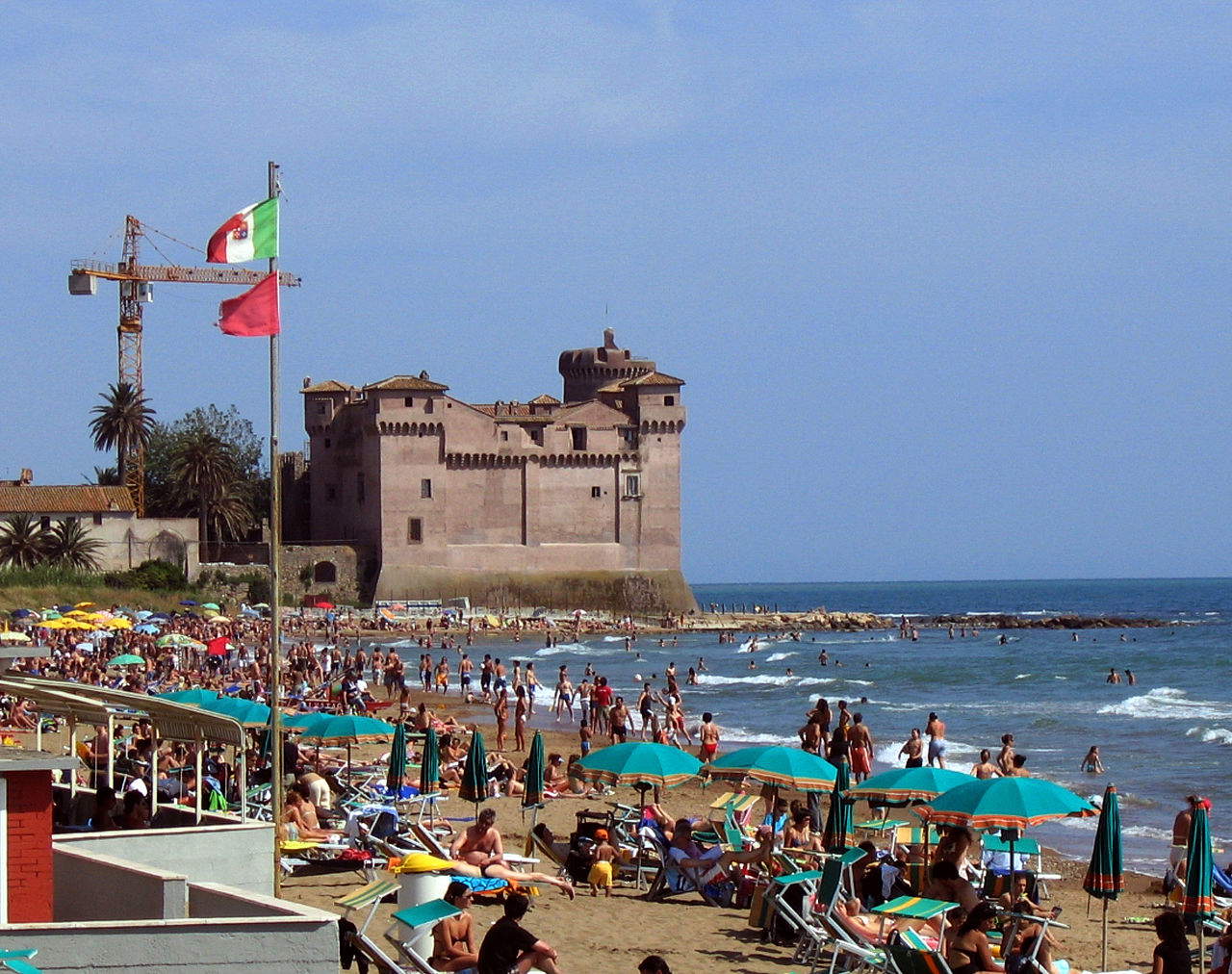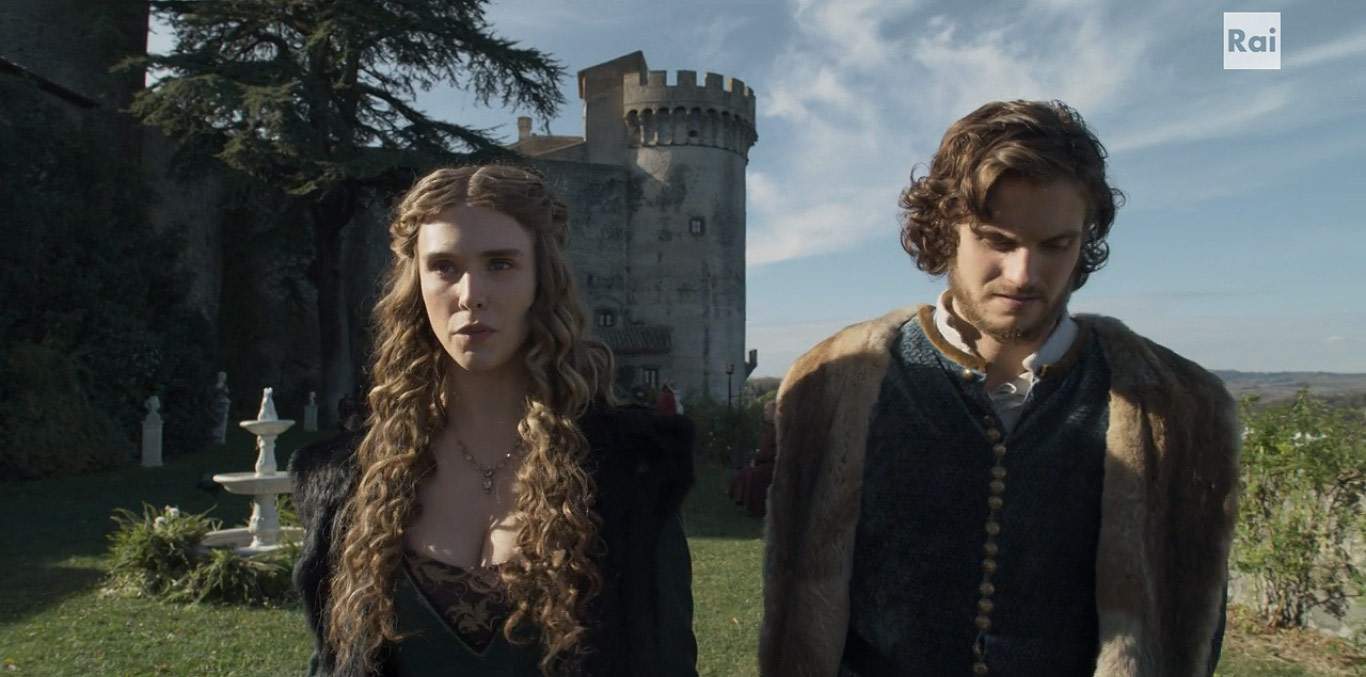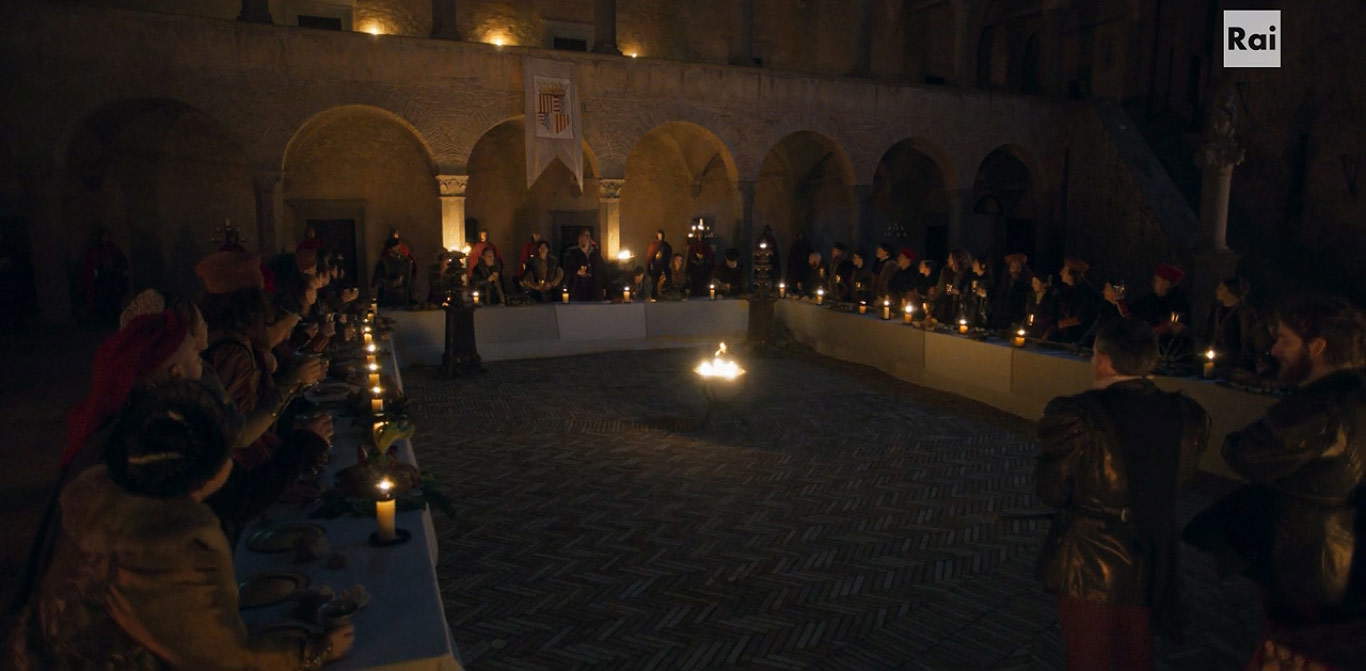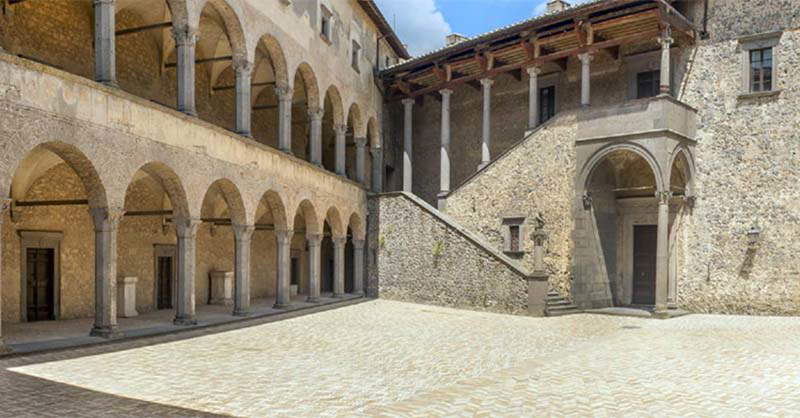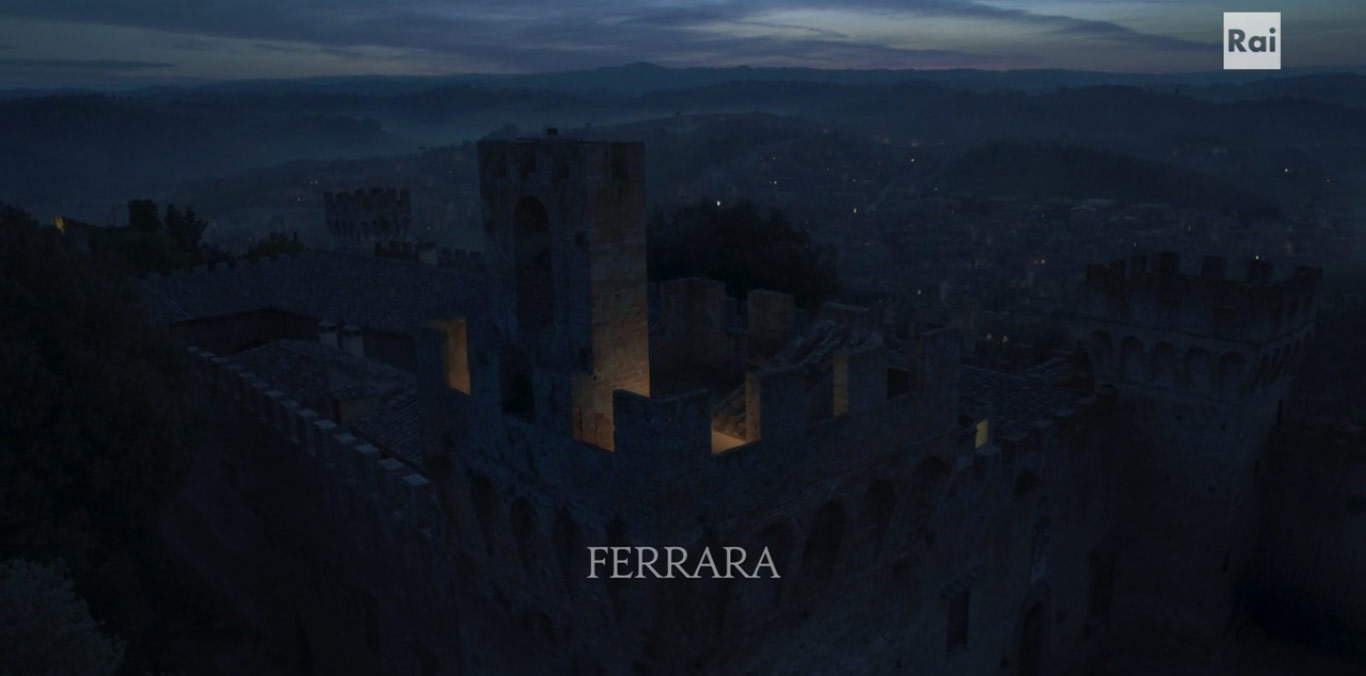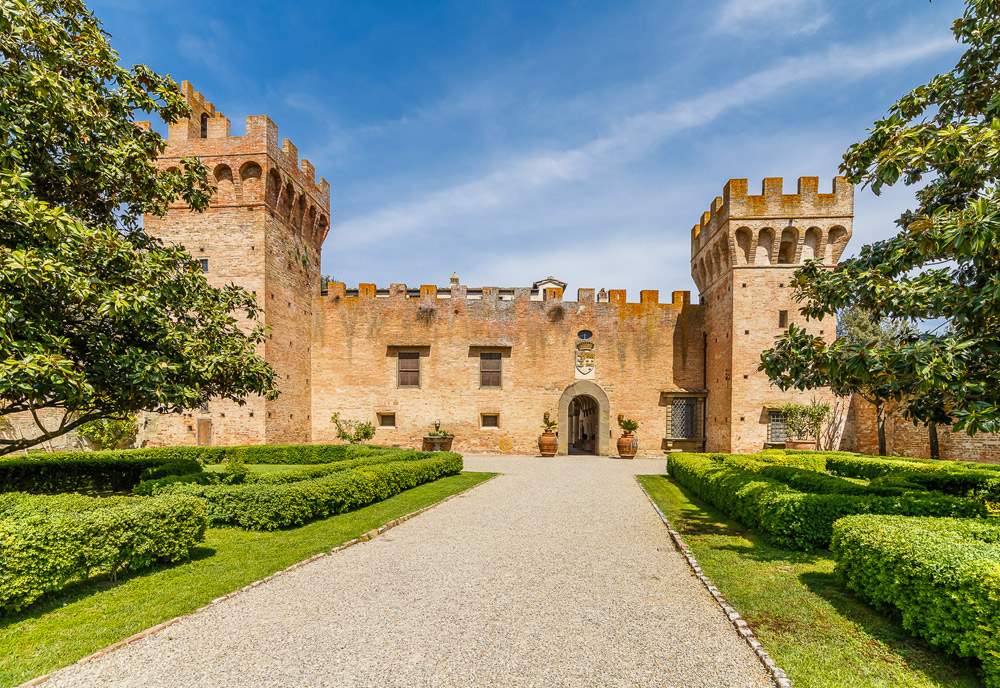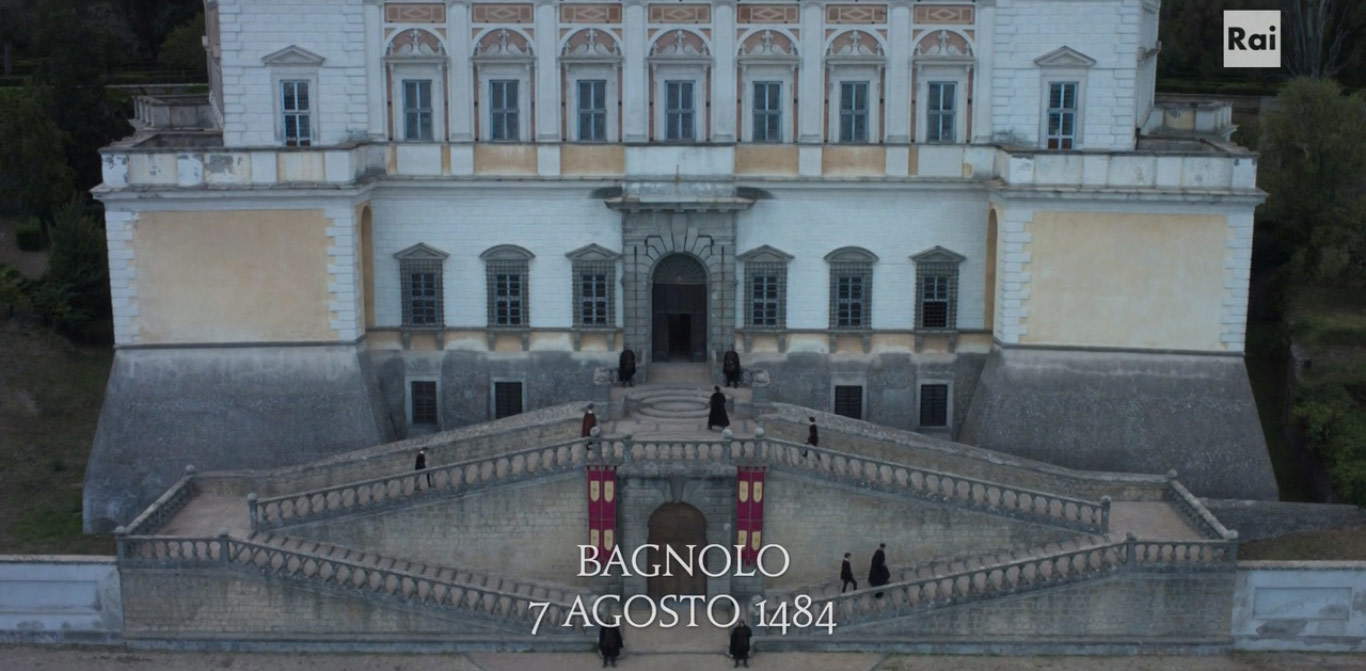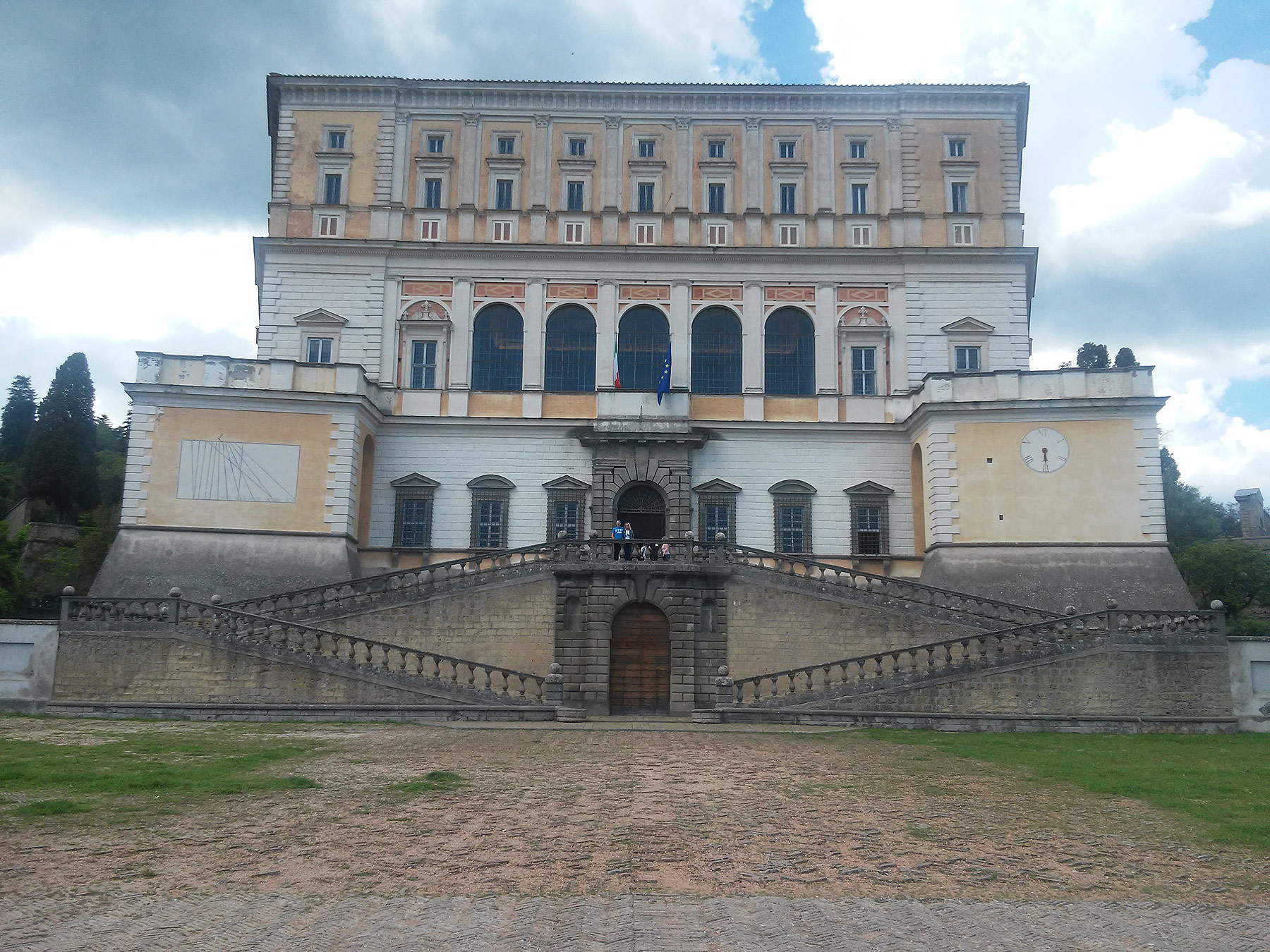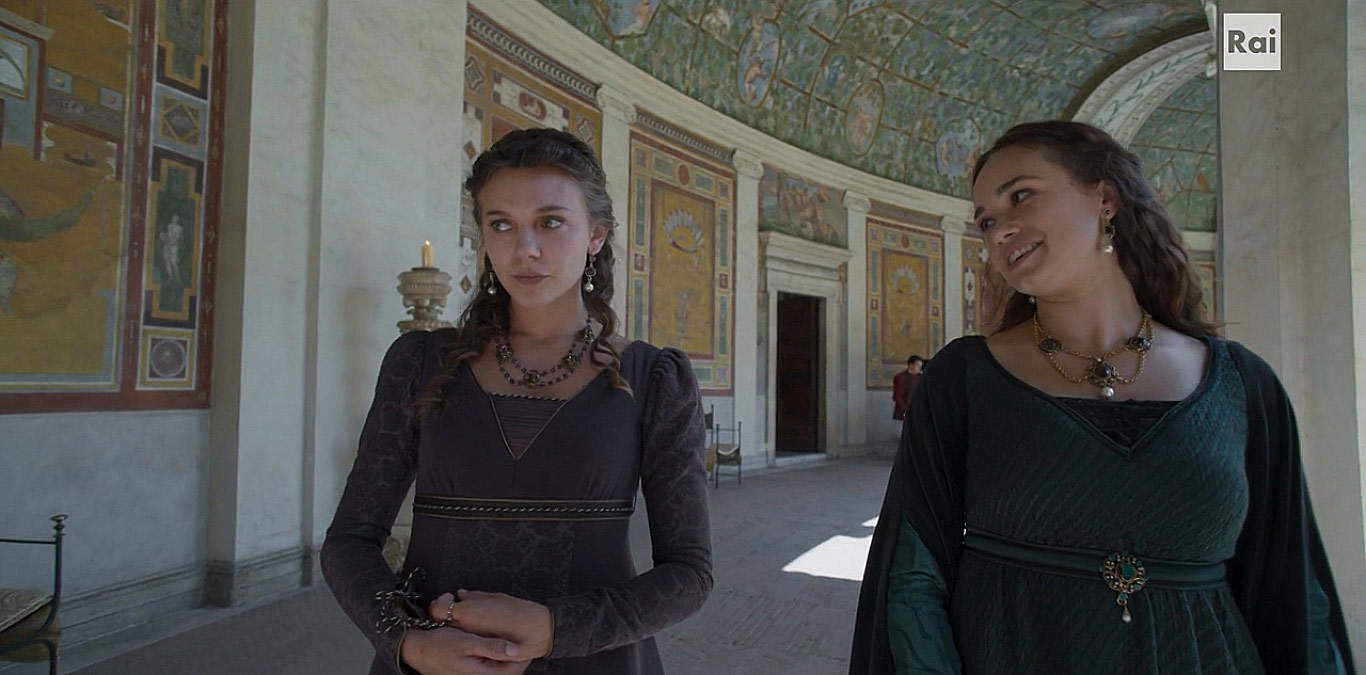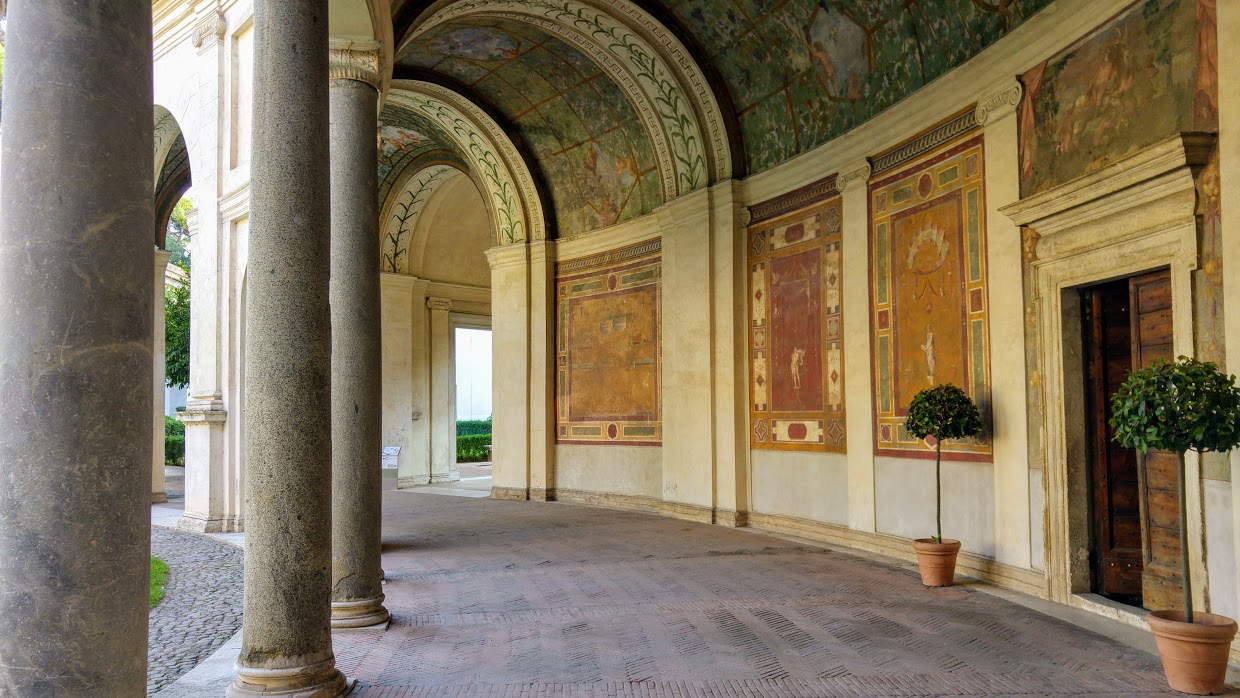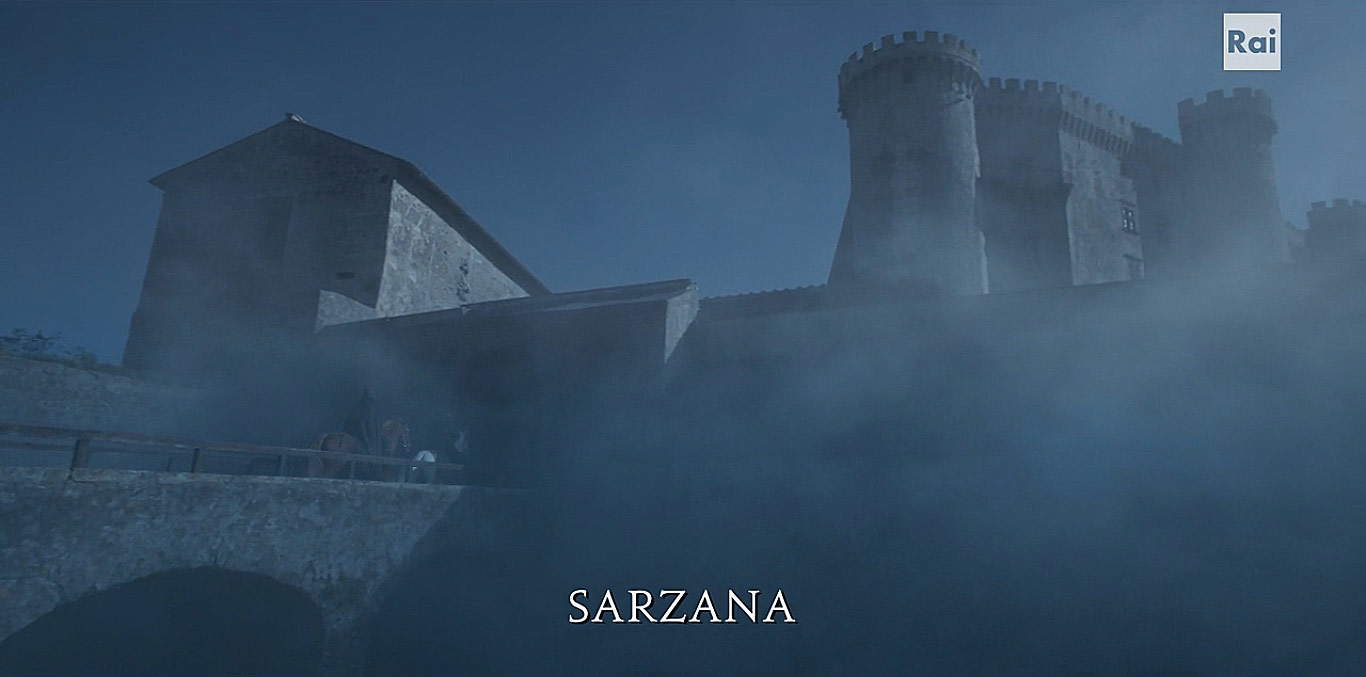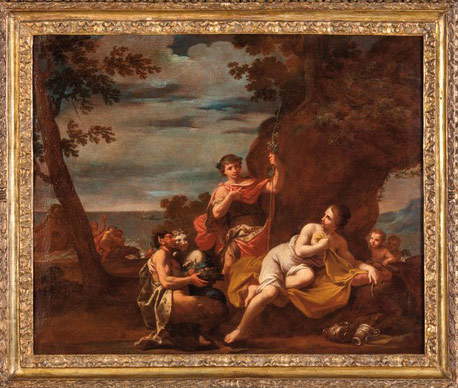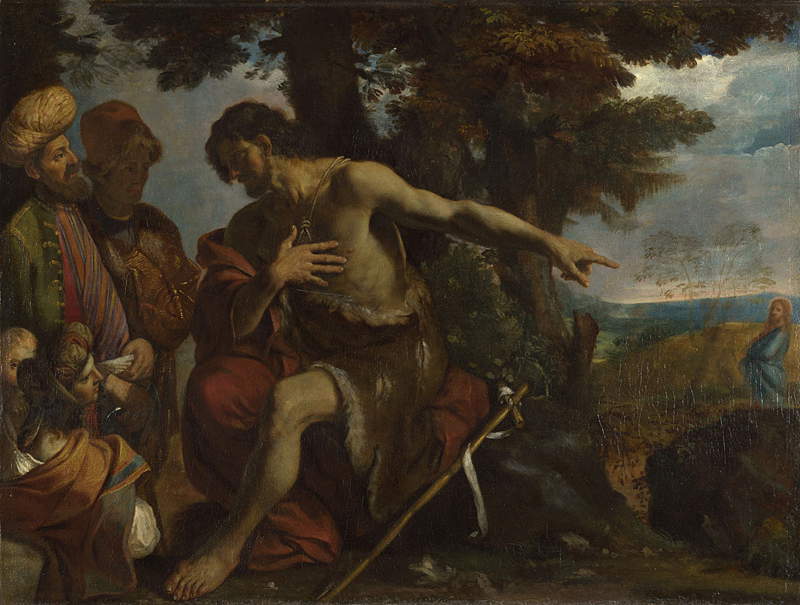by Redazione , published on 11/12/2019
Categories:
Works and artists
/ Disclaimer
Ten locations where the most beautiful scenes of the TV series "I Medici" chronicling the exploits of Lorenzo the Magnificent were filmed.
The TV series I Medici reaches its third season: In the Name of the Family (this is the subtitle of the eight episodes airing for the first time in December 2019) narrates, obviously in a highly fictionalized perspective and with several invented facts and characters, the events surrounding Lorenzo the Magnificent from 1478, immediately after the Pazzi conspiracy(here an in-depth look at how the events really went) and 1492, the year of his demise. The eight episodes recount the Magnifico’s (played by British actor Daniel Sherman) rivalry with Girolamo Riario (Jack Roth), his plots to get a pope on his side to the papal throne (who would later be Innocent VIII, played by Neri Marcorè), and the maneuvers to cover up the Medici bank’s thievery. The series also recounts the love between Lorenzo and Clarice Orsini (Synnøve Karlsen), the artistic exploits of Sandro Botticelli (Sebastian de Souza), the Magnifico’s friendship with intellectuals of the time, including, in addition to Botticelli, the Poliziano (Jack Bannon) and Leonardo da Vinci, his missions abroad to weave his web of alliances.
Much of the drama was filmed in the locations of the first and second series: for fifteen of these settings, we refer you to the article we wrote last year. Here, in anticipation of the season finale, we reveal ten more locations where some of the most important scenes in the series were filmed.
1. Fiction: the courtyard of the Medici Palace (Florence). Reality: the courtyard of the Palazzo Piccolomini (Pienza).
All the scenes set in what in the series is the courtyard of the Medici Palace, were shot in the splendid Palazzo Piccolomini in Pienza, which overlooks the main square of the Tuscan town (the same goes for the exteriors: Piazza Pio II is seen in practically every episode of the series). Palazzo Piccolimini is one of the earliest examples of Renaissance architecture and was built starting in 1459 to a design by Bernardo Rossellino and commissioned by Pope Pius II, born Enea Silvio Piccolomini, a native of the small village of Corsignano, which would later be renamed “Pienza” in his honor.
 |
| Fiction: the courtyard of the Medici Palace (Florence) |
|
|
 |
| Reality: the courtyard of Palazzo Piccolomini (Pienza). Ph. Credit Francesco Bini |
|
|
2. Fiction: church and convent of San Marco (Florence). Reality: church of San Pietro alla Carità (Tivoli).
The convent of San Marco is one of the protagonist places of the third season, since this is where all the scenes featuring Girolamo Savonarola, among the main characters of the last season of the fiction, take place. In fact, all the scenes involving San Marco (except the garden, as will be seen in a moment) were shot at the church of San Pietro alla Carità in Tivoli: we see the facade and bell tower when Savonarola preaches to the crowd of Florentines, and we also see the interior in some scenes. The church is one of the oldest in Tivoli, and its present appearance is due to 12th-century rebuilding and restoration in 1951 following the bombing suffered during World War II. Inside is a beautiful cosmatesque floor.
 |
| Fiction: church and convent of San Marco (Florence) |
|
|
 |
| Fiction: church and convent of San Marco (Florence) |
|
|
 |
| Reality: church of San Pietro alla Carità (Tivoli). Ph. Credit |
|
|
3. Fiction: the garden of San Marco (Florence). Reality: cloister of San Giovanni Battista dei Genovesi (Rome).
The garden of San Marco, the place that the Magnifico made available to artists (a very young Michelangelo was also trained there), is also often seen in the series since it is the scene of the meetings between the de facto lord of Florence, and Savonarola, who is not initially opposed by the Magnifico (indeed, he is the one who wishes him to become prior of the convent). The scenes involving the garden were all filmed in the cloister of the church of San Giovanni Battista dei Genovesi in Rome, a church in Trastevere that has undergone many renovations over the centuries: the facade is eighteenth-century, but a fourteenth-century well (which is also often seen in the fiction) is still preserved in the cloister.
 |
| Fiction: the garden of San Marco (Florence). |
 |
| Reality: cloister of San Giovanni Battista dei Genovesi (Rome). Ph. Credit |
4. Fiction: the Medici residence in Pistoia. Reality: the Casino Farnese (Caprarola).
To escape a smallpox epidemic spreading through Florence, Lorenzo sends his wife Clarice and the rest of the family, sons Piero and Giovanni and nephew Giulio, along with his uncle, Cardinal Carlo de’ Medici, to a fictitious villa in Pistoia: at the time, the Medici had no residences in Pistoia (instead, they had one not far away in, Poggio a Caiano). In any case, scenes from the residence are set in the Casino Farnese in Caprarola, which in addition to being one of the most blatant anachronisms is also one of the most curious locations in the series. The Casino di Caccia built in the second half of the 16th century by Cardinal Alessandro Farnese (although the work was completed later, by Cardinal Odoardo), as a hunting and pleasure cottage within walking distance of the grandiose Palazzo Farnese (so much so that the Casino today is included in the Palazzo’s tour). Its peculiarity lies in the fact that it has two completely different facades: thus, in the fiction, the facade facing the Palace is used for the scenes set in the Vatican gardens, while the opposite facade is, precisely, the fictitious Pistoia residence of the Medici.
 |
| Fiction: the Medici residence in Pistoia |
 |
| Reality: the Casino Farnese (Caprarola). Ph. Credit Finestre Sull’Arte |
5. Fiction: the landing of Naples. Reality: the Castle of Santa Severa (Santa Marinella).
In the series, Lorenzo the Magnificent goes on a mission to Naples to negotiate with King Ferdinand I of Naples (Ferrante of Aragon) as part of the anti-Medicean war that broke out in 1478 after the Pazzi Conspiracy, and which saw Florence on one side, alongside Milan and Venice, and the papal armies allied with Naples, Siena, Lucca, and Urbino on the other. In the fiction, however, Florence fights alone against the alliance between the Church and Naples: in the series, Ferdinand I yields to Lorenzo as he is forced to withdraw his armies from Florence to thwart a Turkish attack against the Kingdom of Naples. In reality, the Aragonese king acquiesced to Lorenzo’s demands on the one hand because the war risked making Girolamo Riario’s presence in central Italy too intrusive, and on the other hand to avoid further fraying relations with Milan. In the series, the landing in Naples was actually filmed in Lazio, in Santa Marinella: in the background one can in fact see the imposing Castle of Santa Severa, a 14th-century fortress built on the shores of the Tyrrhenian Sea.
 |
| Fiction: the landing in Naples |
 |
| Reality: the Castle of Santa Severa (Santa Marinella). Ph. Credit |
6. Fiction: the castle of Ferdinand I (Naples). Reality: Orsini-Odescalchi Castle (Bracciano).
All the scenes set in Ferdinand I’s castle in Naples (the audiences, the talks outside between the Magnifico and Ferdinand’s daughter-in-law Ippolita Maria Sforza, the dinner) were actually filmed at the Orsini-Odescalchi Castle in Bracciano, built in the 15th century and still owned by the Odescalchi family, which keeps it open to the public and has also made it a venue for private events and conferences.
 |
| Fiction: the castle of Ferdinand I (Naples) |
 |
| Fiction: the castle of Ferdinand I (Naples) |
 |
| Reality: Orsini-Odescalchi Castle (Bracciano) |
7. Fiction: Ferrara. Reality: Brunelleschi Castle (Oliveto di Castelfiorentino).
In the series, there is an improbable conquest of Ferrara by Girolamo Riario, set in an even more improbable Ferrara ... among the hills. The conquest of the city, in the fiction, is aimed at weakening Florence. In reality, the events surrounding Riario’s presence in Ferrara lapped at Florence in a very marginal way: the lord of Imola and Forlì, in fact, went on a mission to Venice to suggest that the Republic wage war against the Este family (Riario’s goal was in fact to expand his Imola domain at the expense of the Este domain). The casus belli was identified in the dispute over the possession of the Comacchio salt pans. The fortunes of the war arrised to the Venetians, and in 1484, two years after the start of hostilities, the Treaty of Bagnolo was signed, which sanctioned peace between the two powers, providing, however, that the Duchy of Ferrara would maintain its independence without passing to either Venice or the Church State. In the fiction, the attack by Riario’s men on Ferrara was filmed at Castello Brunelleschi in Castelfiorentino, once the residence of the noble Pucci family of Florence, was put up for sale last year.
 |
| Fiction: Ferrara |
 |
| Reality: Castello Brunelleschi (Oliveto di Castelfiorentino) |
8. Fiction: house of peace in Bagnolo. Reality: Palazzo Farnese (Caprarola)
The Treaty of Bagnolo that ended the salt war between Ferrara and Venice was signed in August 1484 in Bagnolo Mella (now in the province of Brescia). However, in reality the episode had a totally different atmosphere than that recounted in the fiction (where, moreover, it comes at the conclusion not of the war between Venice and Ferrara, but of the anti-Medicean war). Meeting in Bagnolo were representatives of the powers involved and not directly the heads of state, and most importantly, the peace did not take place in a sumptuous palace, but in a very common tavern, the Osteria “delle Chiaviche.” In the series, however, the Treaty of Bagnolo is signed in the marvelous Farnese Palace in Caprarola, built in the second half of the 16th century by Cardinal Alessandro Farnese (thus almost a hundred years after the events narrated by I Medici).
 |
| Fiction: house of peace of Bagnolo |
 |
| Reality: Palazzo Farnese (Caprarola). Ph. Credit Finestre Sull’Arte. |
9. Fiction: the site of the meeting between Clarice Orsini and Caterina Sforza. Reality: Villa Giulia (Rome)
The site of the first meeting between Clarice Orsini, wife of the Magnifico, and Caterina Sforza, wife of Girolamo Riario, takes place in what would appear to be the palace of a fictitious “Cardinal Bianco,” a participant in the conclave that would elect Pope Giovanni Battista Cybo, who ascended to the throne of Peter under the name Innocent VIII. The meeting scene is filmed in the courtyard of the hemicycle of Villa Giulia in Rome (now home to the National Etruscan Museum). Another anachronism, since the villa was built, like Palazzo Farnese, in the second half of the 16th century.
 |
| Fiction: the site of the meeting between Clarice Orsini and Caterina Sforza. |
 |
| Reality: Villa Giulia (Rome). Ph. Credit Camilla Boban |
10. Fiction: the arrival at Sarzana. Reality: Orsini-Odescalchi Castle (Bracciano).
In the sixth episode of the series, Lorenzo the Magnificent’s advisor (a fictional Bruno Bernardi played by Johnny Harris) travels to his hometown, Sarzana, to ask the gonfaloniere (his brother Guido, another fictional character) to repay a debt of one hundred thousand florins owed to the Medici bank, otherwise the Magnifico would have started a war against the Ligurian city. This is one of the turning events in the series, although in reality things did not turn out that way: in the series, Sarzana is unscathed by any war events, but in reality between 1484 and 1487 it was the scene of a bitter dispute (resulting in a siege of the city) between Florence and Genoa that arose in the context of territorial issues (the city was under the control of Genoa, and the Treaty of Bagnolo provided that it should return to Florence, but the Genoese on the contrary ceded it to the Banco di San Giorgio, which did not want to leave it to the Florentines). The Florentines thus occupied Sarzana: during the war the Firmafede Fortress was destroyed, which was rebuilt by the Magnifico himself: still in existence, it is now home to the MUdeF (Museum of the Fortress) and hosts events and concerts. What is assumed in the fiction to be the Sarzana Fortress is actually still the Orsini-Odescalchi Castle in Bracciano, taken from a different angle.
 |
| Fiction: the arrival in Sarzana(Florence) |
 |
| Reality: Orsini-Odescalchi Castle (Bracciano). Ph. Credit |
11. Bonus: the fictitious painting “I and Argos”
In the farewell scene between Lorenzo the Magnificent and Ippolita Maria Sforza (who, contrary to how she is portrayed in the fiction, had a reputation as a woman who was extremely faithful to her husband Alfonso of Aragon), the noblewoman gives Lorenzo a painting depicting the myth of Io and Argo, which would allude to Ippolita’s condition as a very guarded woman in the court of Naples. The work seen in the fiction is actually a seventeenth-century pastiche where Io is “interpreted” by an anonymous seventeenth-century Ariadne in a painting, Bacchus and Ariadne, passed at auction by Wannenes in 2015, while Argo would actually be none other than the Saint John the Baptist protagonist of a circa 1640 painting by Pierfrancesco Mola kept at the National Gallery in London (and who, moreover, appears in the TV series picture...with a severed arm).
 |
| The fictitious painting |
 |
| Seventeenth-century painter, Bacchus and Ariadne (second half of the 17th century; oil on canvas, 74 x 90 cm; Private collection) |
 |
| Pier Francesco Mola, Preaching of Saint John the Baptist in the Desert (c. 1640; oil on canvas, 54 x 70 cm; London, National Gallery) |
Warning: the translation into English of the original Italian article was created using automatic tools.
We undertake to review all articles, but we do not guarantee the total absence of inaccuracies in the translation due to the program. You can
find the original by clicking on the ITA button. If you find any mistake,please contact us.

